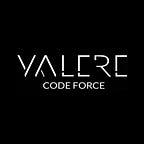Your app’s checkout optimization is key to a great conversion rate. Here’s how!
The key to optimising anything is to understand the final goal, which in this case is checkout optimization for a seamless conversion. But what most people miss out on is creating a problem specific goal. But how do you create a specific goal to optimise the checkout process of your mobile app? By using Funnel Analysis. Funnel Analysis helps you track and understand your user’s journey on the app. It helps identify the good parts that are helping conversions and the parts where the user is losing interest and not converting.
Once you understand the hits and misses of your app, you can create a clearer and more specific goal for a better e-commerce checkout flow. To begin with, here are some key pointers that you can keep in mind before you get started with the checkout process.
The e-commerce checkout flow should fit the smallest screen
When you optimise the design to fit the smallest screens (imagine the iPhone 4), user experience across devices becomes more inclusive. With the advent of full-screen phones, the way we look at spacing and navigation has completely changed, but we have to keep the complete set of users in mind and create a design that is equally as functional and seamless for those who still haven’t switched to the full-screen experience yet. This ensures that our fonts are never too small, the CTA is always highlighted and all relevant & important information is visible.
Create the design to ease one-hand usage
A very in-depth study confirmed a common observation that 49% of us use our phones single-handedly. This means our design also needs to be optimised accordingly. When creating for single-hand usage, most designs are made such that right-handed individuals can navigate seamlessly, but that leaves out a 10–20% chunk of the left-handed population. A great way to test out your design is by using The Opposite Handed UX Test by Jeffrey Huang. With newer insights and device screens, some old reliable design options, like the hamburger menu, are quickly losing their footing. So, as you design, keep these changes in mind and how it can help the process be faster and quicker.
Split the checkout process into separate screens
While this may seem like a very obvious tip, it’s important to get the process down to a T so that you can get a conversion and/or information to contact your user. Instead of creating a long scrolling checkout page, create one that breaks the e-commerce checkout flow down into separate clear steps for easier navigation. For example, a basic e-commerce checkout process will involve the following:
- Enable the option to review & edit/delete/add items in your cart
- Get shipping & contact information
- Select shipping method
- Confirm the items & total amount with shipping cost & taxes
- Redirect to payment gateway
- Order confirmation and/or payment awaited or whichever condition applies
Don’t miss out on adding descriptive text
Everybody using the digital space has used enough checkouts to know what to do, but the descriptive text makes it a more subconscious & smooth effort. Without descriptive text, one has to actively read and process the information which makes it feel more cumbersome. Also, every app is ideally unique in its own experience. This means that all checkout processes may feel similar, they might not be the same. So, the descriptive text works as a guiding hand
Adding visual cues that help
Progress Bar
A progress bar is like a subtle reassurance that with each step you’re closer to your goal. It acts as a subtle positive reinforcement while informing the user of their checkout progress.
Digital Trust Badges
Including visual cues like these badges helps users feel more credibility and trust towards the app and its checkout process. When known logos like Visa or Mastercard show up with an icon that says ‘100% satisfaction guaranteed, it goes a long way to tell a customer that this is a company that you can trust.
Suggested Address
Google Maps’ suggestion tool is a powerful tool that when used to autofill shipping information makes the checkout process faster.
Customised checkout experience
When you create a customised eCommerce checkout flow for your app, you are creating one that’s tuned to your audience’s needs and your product’s offering. For example, you can offer more payment gateways than what may be available by default. Multiple shipping platforms can be integrated, offers at checkout can be activated and even customised to each customer, etc. All of these together make the customer’s experience more wholesome and leads to an increased conversion rate.
The checkout or the cart page is usually the page where most people quit the purchase process. Thus, it’s the one that should be the most seamless and easily accessible to let everyone make an informed but quick decision. The best way to do it is to work towards mobile conversion rate optimization.
At Valere, our goal is to ensure that you not only get the product you need but also one that is scalable and helps you grow. To know more about the process behind creating an app you can read our blogs. If you’re someone who is looking to build and develop your own app or are someone who is curious about it, you can check out our App Development Cost Calculator!
Valere is an award-winning software development agency that has built over 300 top-rated applications for startups and Fortune 500 companies in all verticals like healthcare, finance, sports, fitness, education, and more. Their apps have been featured by the New York Times, and have been consistently recognized as Apple App Store’s top featured apps, TechRadar, and Google Play Store’s top featured apps! Schedule a call with us today to learn how we can help your team create the perfect software or application that can Accelerate Your Business Goals!
